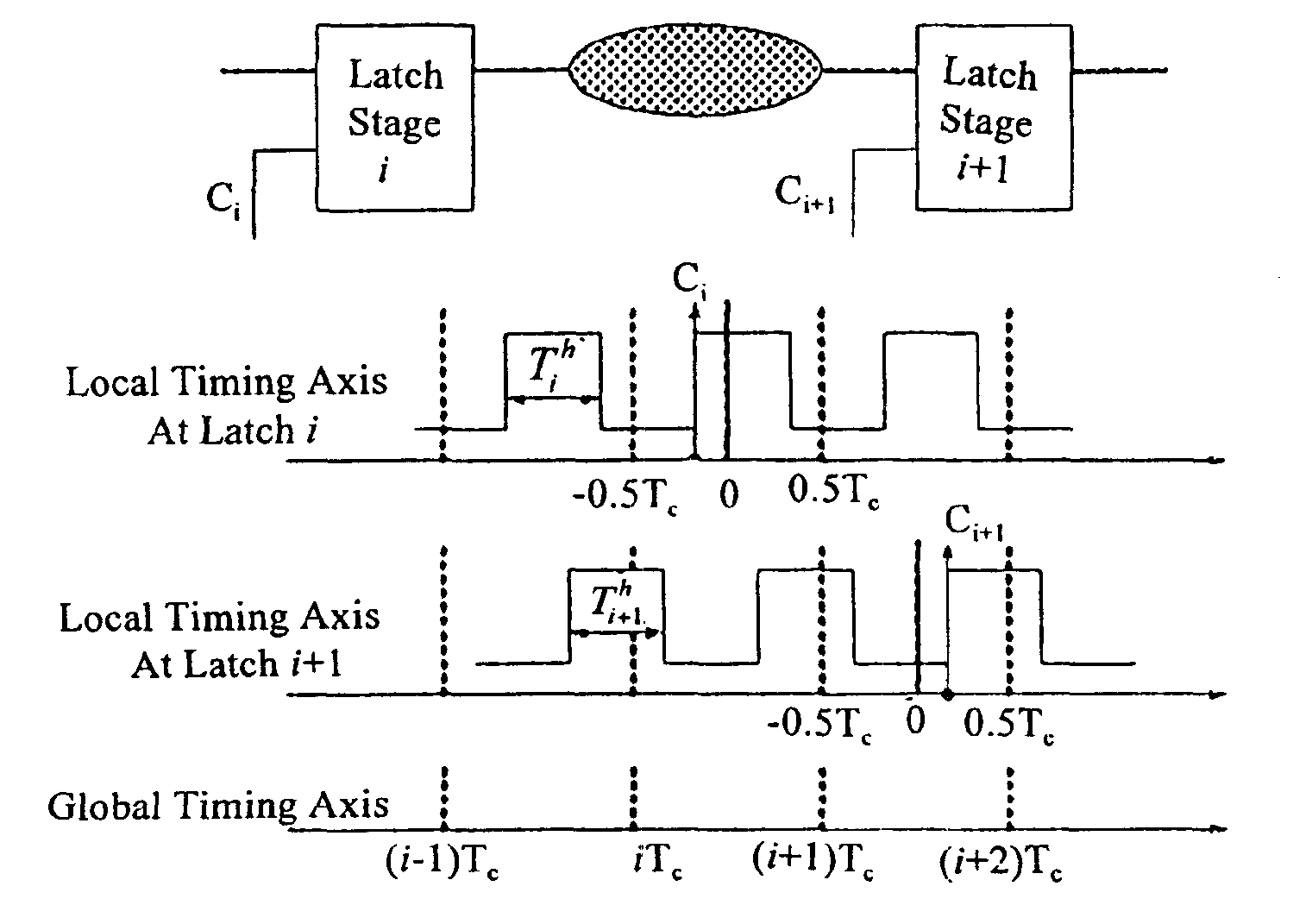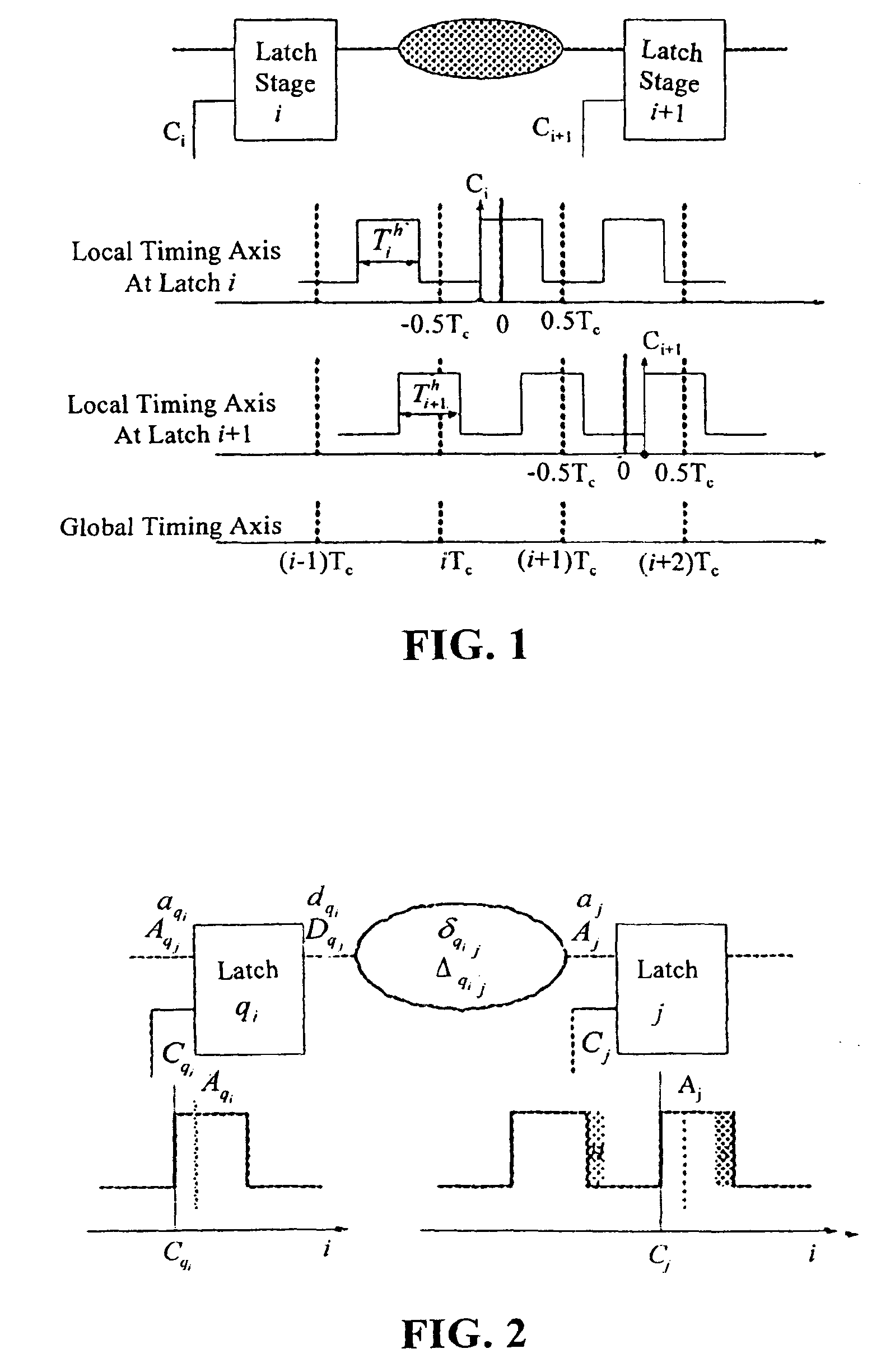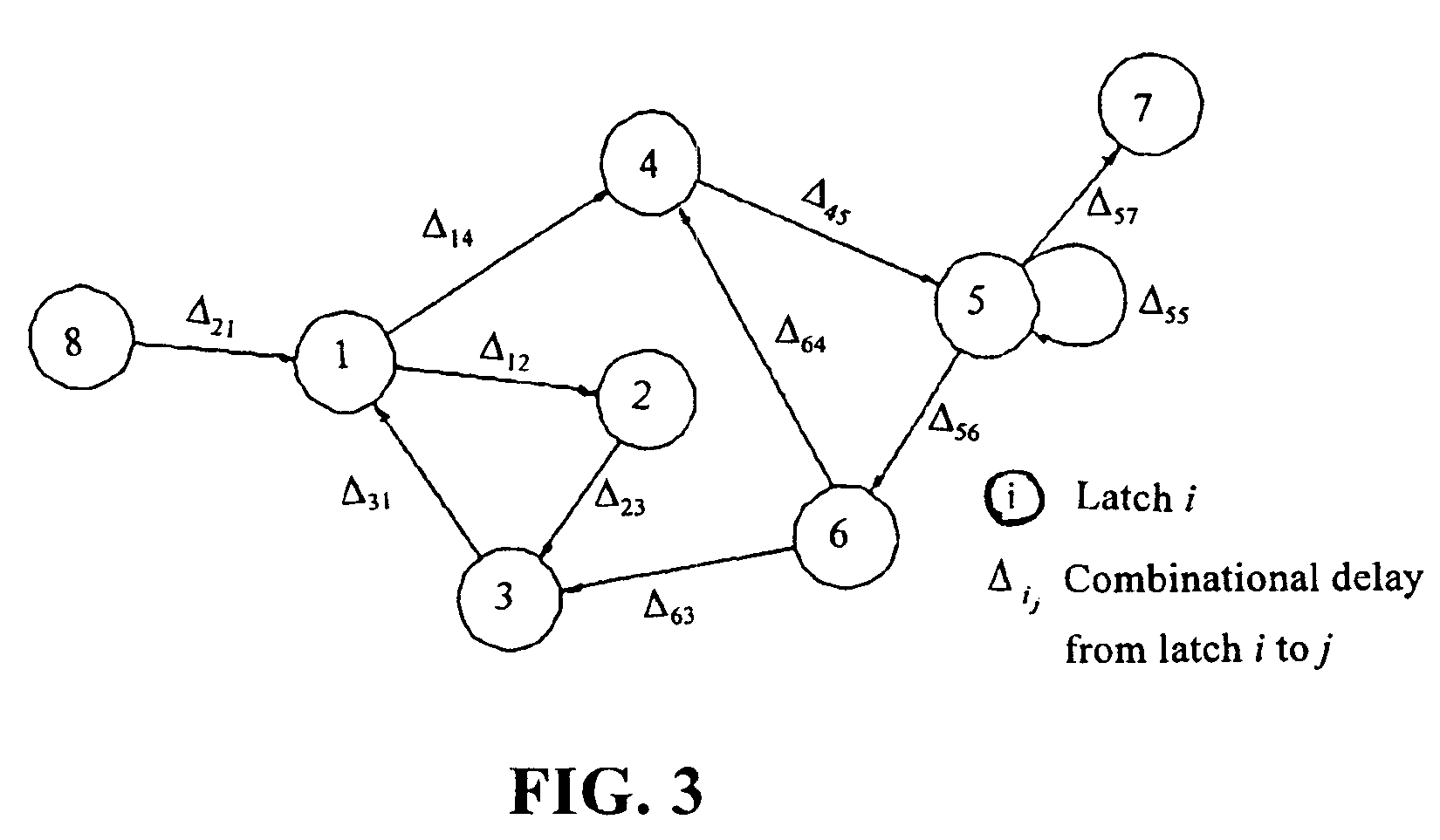Statistical iterative timing analysis of circuits having latches and/or feedback loops
a technology of latches and latches, applied in the field of statistical iterative timing analysis of integrated circuits having feedback loops and latches, can solve problems such as increased susceptibility to noise, increased timing variations, and parameter deviations from their designed values
- Summary
- Abstract
- Description
- Claims
- Application Information
AI Technical Summary
Benefits of technology
Problems solved by technology
Method used
Image
Examples
Embodiment Construction
1. Problem Formulation
[0052]Initially, for sake of simplicity, this document will generally discuss the case where all latches are clocked under the same frequency 1 / T. However, it should be understood that the methods described in this paper can be extended to the case of multiple clock frequencies by partitioning a circuit into different clock domains and analyzing each domain individually.
[0053]If level-sensitive latches are sequentially arranged in a circuit, iterative methods are preferably used for analysis of circuit timing problems due to the possible self-dependence issue, with one iteration being performed at every clock cycle. During each iteration k (k being used to denote the iteration index), signal departure times at all latches' outputs are computed, and signal arrival times at all latches' inputs are updated.
[0054]Referring to FIG. 1, which illustrates the clock scheme in an exemplary circuit, the latches in the circuit (here specifically labeled latch i and latch ...
PUM
 Login to View More
Login to View More Abstract
Description
Claims
Application Information
 Login to View More
Login to View More - R&D
- Intellectual Property
- Life Sciences
- Materials
- Tech Scout
- Unparalleled Data Quality
- Higher Quality Content
- 60% Fewer Hallucinations
Browse by: Latest US Patents, China's latest patents, Technical Efficacy Thesaurus, Application Domain, Technology Topic, Popular Technical Reports.
© 2025 PatSnap. All rights reserved.Legal|Privacy policy|Modern Slavery Act Transparency Statement|Sitemap|About US| Contact US: help@patsnap.com



